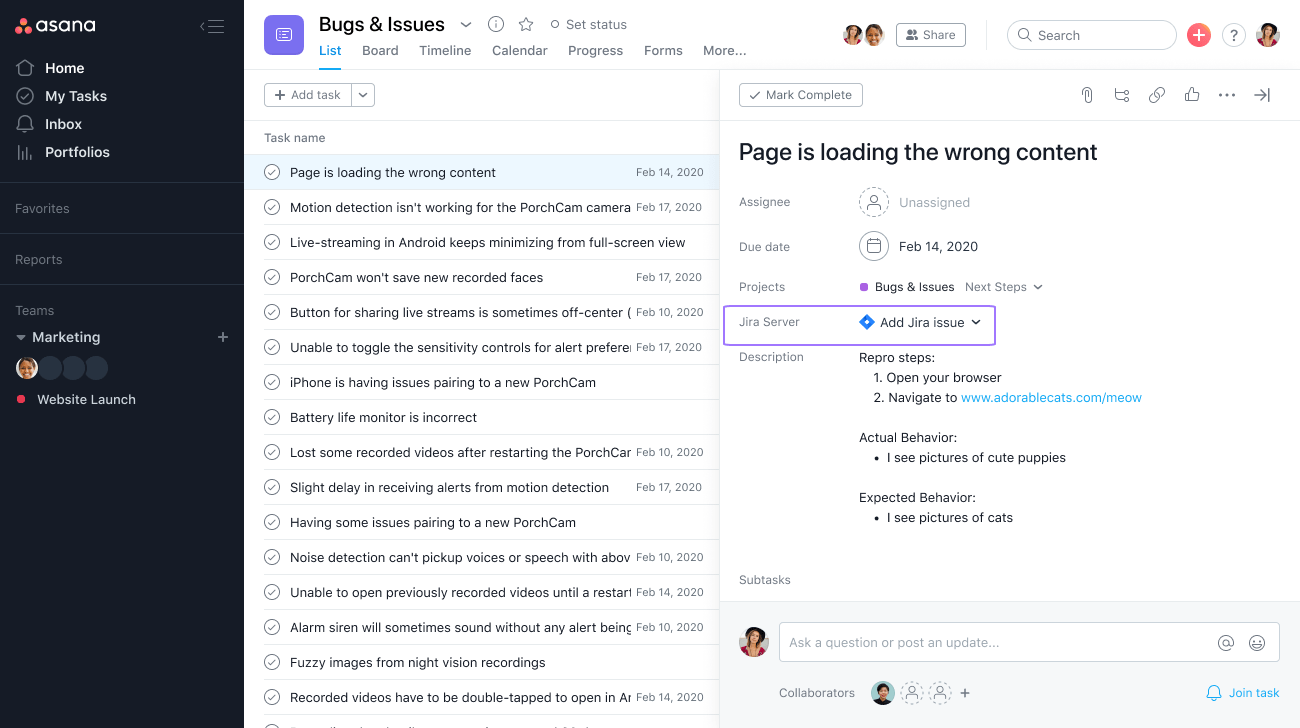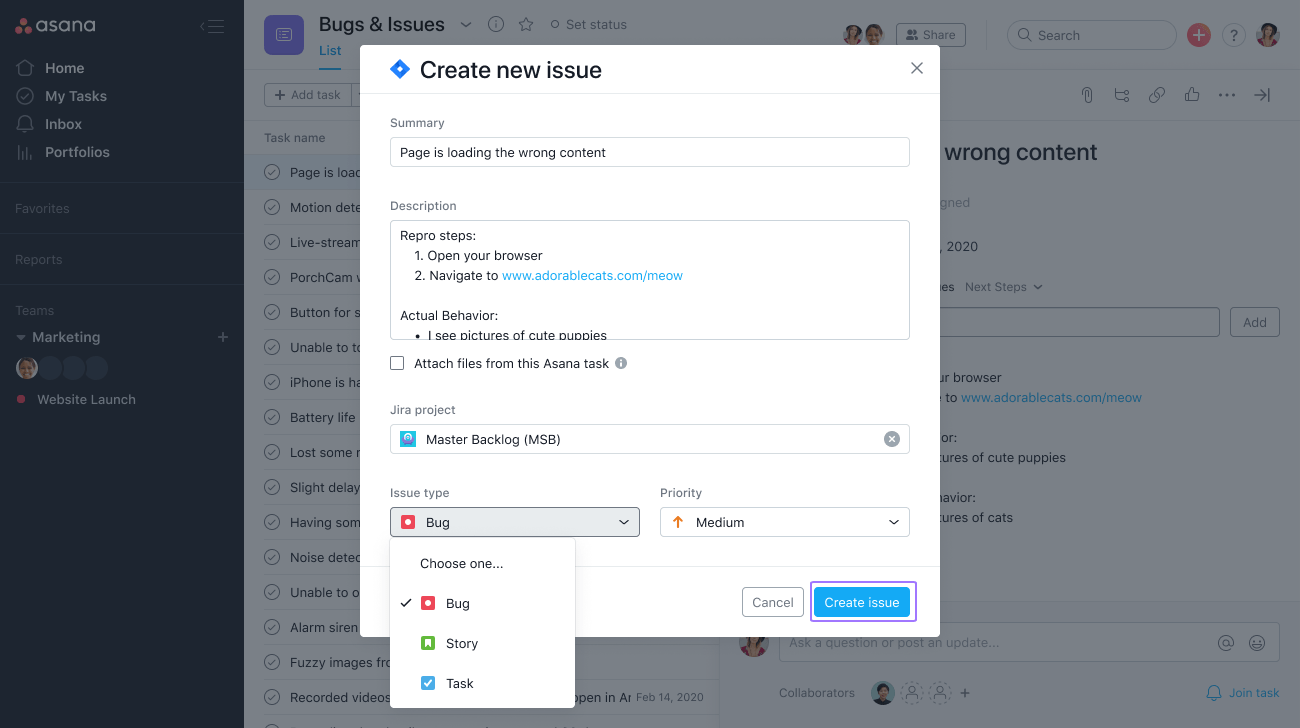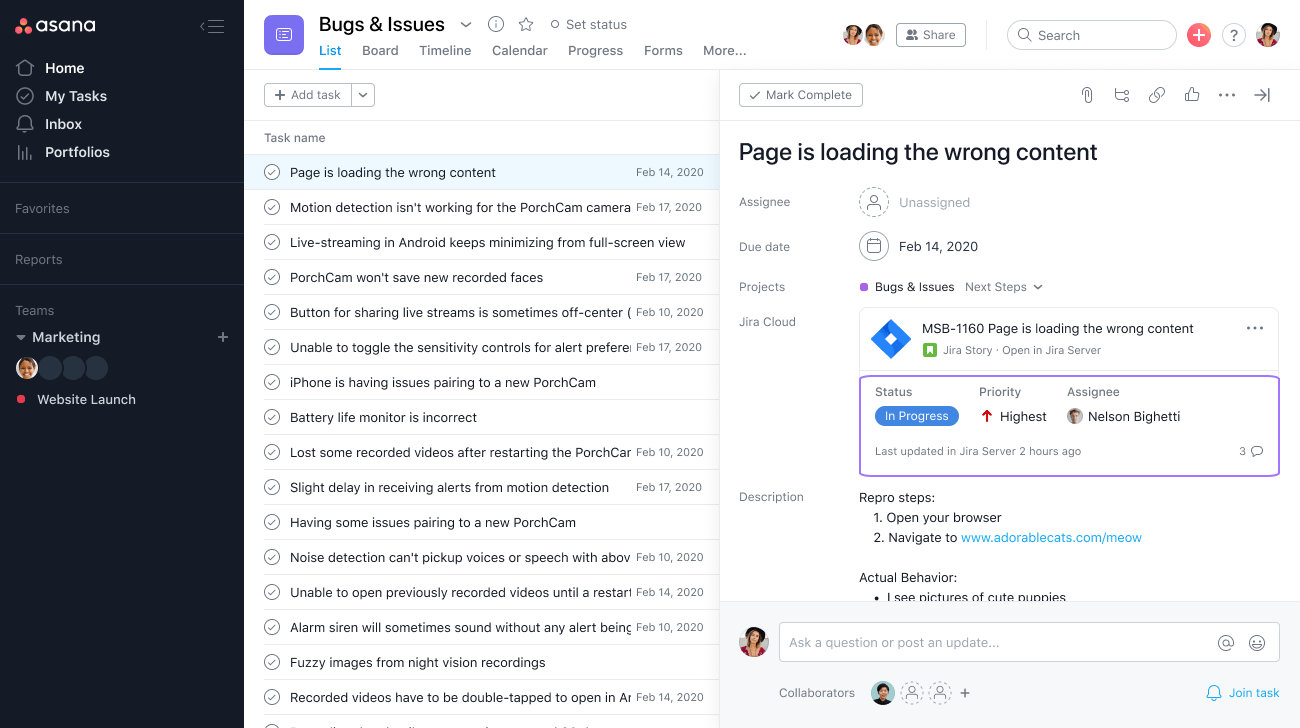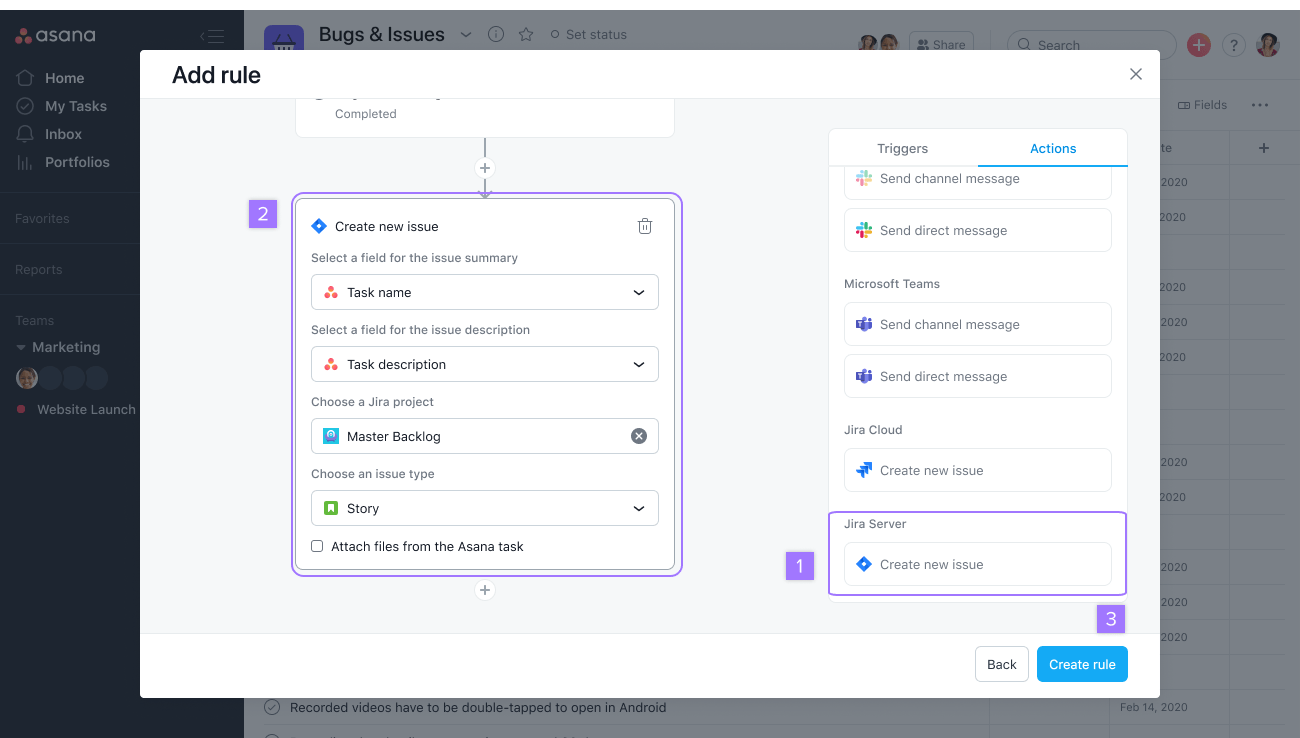Productivity - Jira Server
Modified on Wed, 17 Jul, 2024 at 9:23 AM
Available on Asana Starter, Advanced, Enterprise, and Enterprise+ tiers, as well as legacy tiers Premium, Business, and Legacy Enterprise.
Visit our pricing page for more information.
Asana for Jira Server is an integration that allows collaboration and visibility between teams working in Asana and Jira.
This integration brings the value of the Jira Cloud integration to users who use Jira Server.
It allows business and product teams (that spend the majority of their time planning and actioning on work in Asana) to collaborate and track work seamlessly with engineering teams (who plan and execute work in Jira). Its purpose is to optimise scheduling by tracking sprints and ultimately providing Asana users visibility into the development stage in Jira.
Asana for Jira Server bridges the gap between the planning stages in Asana and the development phases in Jira, from execution to delivery.
It creates and monitors the status of Jira issues inside Asana tasks.
Related articles
Requirements for installation
Asana requirements:
The Jira Admin must have the following available for the first steps of installation:
- An Asana account
- A paid plan
Looking for a better way to manage your work? Get started with a free 30 day Asana trial. Try for free.
Jira requirements:
Jira Software Server or Data Center instances are supported, and configured according to requirements linked below. For specific version support, please reference the Jira Marketplace listing.
If you use Jira Cloud, use the Asana for Jira Cloud integration
How to install
The Jira Admin needs to create the application link by installing the plug-in from the Jira Server Marketplace. The Jira Admin will need to complete the first steps, then the end users in Asana will be able to add the integration to any projects they have access to.
Jira Admin Install:
- Navigate to this GitHub repository for details on supported configurations of Jira Server to allow external connections
- After configuring your Server instance accordingly, navigate to the Jira Sever Marketplace listing for 'Asana for Jira Server' and install it.
Next, the Jira Admin needs to authenticate the application by clicking Connect to Asana
- You will be prompted to Auth with Asana
- Once granted please choose the appropriate Asana domain to connect to the new integration
- Once you see a confirmation in Jira, the steps needed from the Server are complete, and the rest can be completed by users in Asana
Asana users:
- In Asana, go to the project you want to add the integration to
- On the top right of your screen click Customize, scroll down in the menu and click Add app
During authentication if you get the message "Your Asana has not been added to Jira server" go back to "Jira Admin Install" step and make sure the Asana Org is authenticated, the relevant workspace has been selected and is showing up in the Jira Server Administration.
Once complete, the app will be added to the project, and users should see a Jira Server field on tasks where they can add existing or create new Jira issues from within Asana.
If this is the first time you have tried to add the App to a project, you will go through a series of Jira and Asana authentication flows. After completion you will be able to link issues to tasks in the relevant project.
OAuth 2.0 for Jira Server and Jira Data Center
OAuth 2.0 is supported for Jira Server and Jira Data Center from version 8.22 and above.
There are two ways to install an integration for Jira Server and Jira Data Center. With the OAuth 1.0 installation process, customers are required to install the Asana for Jira Server add-on from the Atlassian Marketplace.
Using OAuth 2.0 does not require this step to enable the installation process, meaning that a Jira Admin can complete the entire installation process directly from their Jira instance.
Step-by-step installation instructions
This process can only be carried out by Jira Administrators.
- Generate the application link credentials:
- Open the Applications dropdown menu by clicking on the gear icon
- Open Application links on the dropdown menu
- Create a new incoming application link with the following parameters:
- Application type: External application
- Direction: Incoming
- Redirect URL: https://jira-api.integrations.asana.plus/setup/callback/jira
- Permission: Write
- After you hit Save, the resulting page provides you with the credentials: Client ID and Client secret. Keep this page open as you will need this information in step 5.
- Open the setup page by entering https://jira-api.integrations.asana.plus/setup in a separate tab on your browser.
- Log in with your Asana account and confirm your approval to grant permissions by clicking Allow. After successful login, select an Asana workspace with which you want to integrate your Jira instance.
- You are asked to enter the following information:
- Jira domain: The Jira domain you’d like to connect to. Your Jira instance needs to be accessible from the public internet; if your Jira instance is only accessible via your corporate network or a VPN, this will not work.
- Client ID: From step 2.
- Client secret: From step 2
- Click Save
- You are then asked to grant permission for Asana to access your Jira domain. Click Allow if you’d like to proceed.
Features
The integration can now be used to link an existing Asana task to an existing Jira issue or create a new issue.
Link Asana task to existing Jira issue
From the dropdown menu at the Jira Server field you can add an existing issue.
Then enter the URL of the Jira issue, or simply type in the name of the issue in the text field.
From here you can open a Jira issue, give feedback and remove an issue from a task.
Create Jira issue from Asana task
Select Create new issue from the Jira Server field within the task in Asana.
A new dialog pop up will next appear for you to fill in. Please try and fill in all fields (specifically project and issue type). You can also attach files from the Asana task.
Click Create issue.
Asana will load the relevant details from the completed fields to create the issue.
After you’ve created or linked an issue, you’ll see the updated details about the issue within the task in Asana. You can only add one Jira issue per each Asana task.
Once the Jira Issue is created a real-time Jira widget is available providing you with the Status, Priority, and Assignee of the Jira Issue. Click into it to see more.
Any changes made to the issue in Jira will be reflected in Asana at the next page load.
Key functionality
Bridge the gap between the planning stage and the hand-off: Project Managers can seamlessly create a Jira issue from Asana when tasks are engineering ready. The planning has already happened in Asana and the product manager is ready to transfer over to the engineering department with ease to do their sprint planning in Jira. This integration saves time and avoids data inconsistencies.
To save steps and optimize your workflow, you can automate the creation of Jira issues via our Rules feature. Learn how.
From the Add rule pop up:
- Under Jira Server click Create new issue
- Fill out all the fields in the Create new issue box
- Click on Create rule to automate the creation of Jira Server issues
- Transparency in development work in Jira: Asana users have visibility to work happening in Jira so they can update stakeholders and important clients on key release dates, bug fixes, etc. Similarly, the product manager wants the flexibility to be able to track, plan, and execute Jira work within Asana. It's a win-win.
For a list of common questions on the Asana for Jira Server integration, see our FAQ article.
Was this article helpful?
That’s Great!
Thank you for your feedback
Sorry! We couldn't be helpful
Thank you for your feedback
Feedback sent
We appreciate your effort and will try to fix the article








